| Auchenorrhyncha
|
|
Aphrophora alni: An introduced European spittlebug that feeds on plant xylem sap; its larva
surrounds itself with foam to conserve moisture. Length 9 mm.
| |
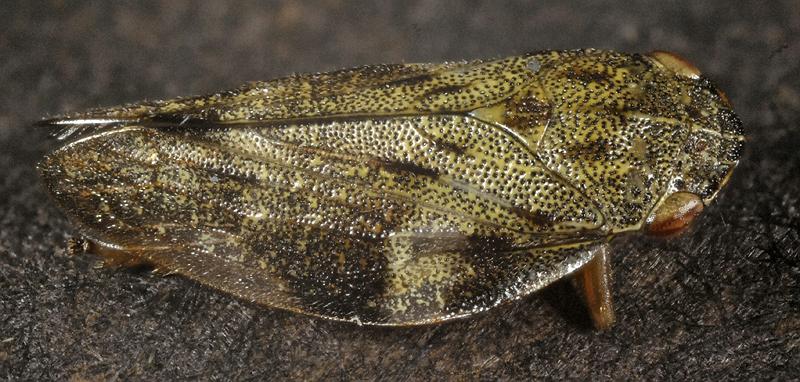

|
|
Auchenorrhyncha: Spittlebug on Rudbeckia fulgida. Large one length 3.5 mm.
| |
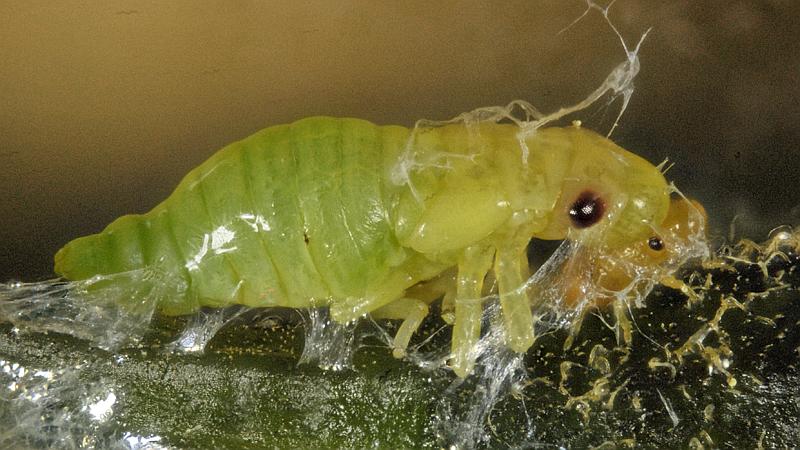

|
|
Ceratagallia humilis: These active leaf hoppers are widespread in Canada. Length 2 mm.
| |
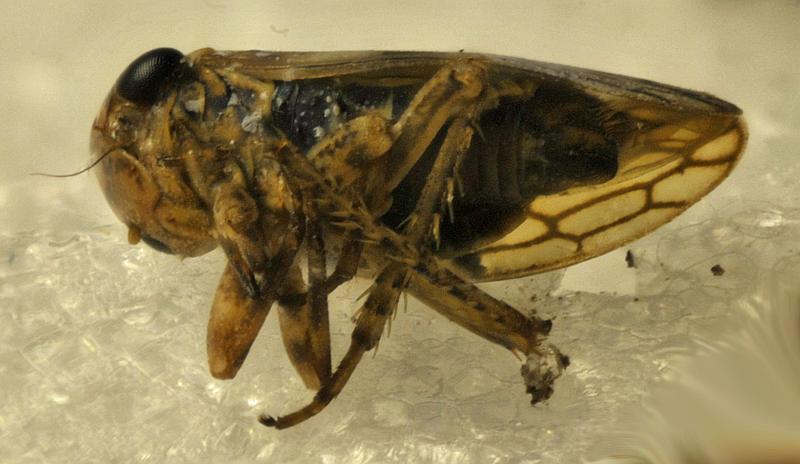

|
|
Coelidia olitoria (Jikradia olitoria): One of the most common leafhoppers, it feeds on plant sap.
Body length 3 mm.
| |
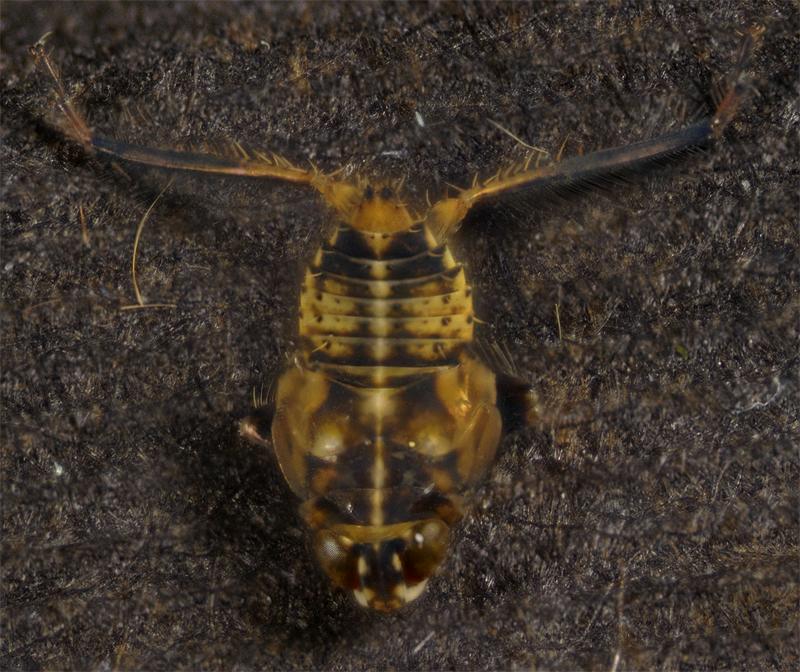

|
|
Empoasca fabae: Potato Leafhopper larvae cause problems for potato crops. Length 2.5 mm.
| |
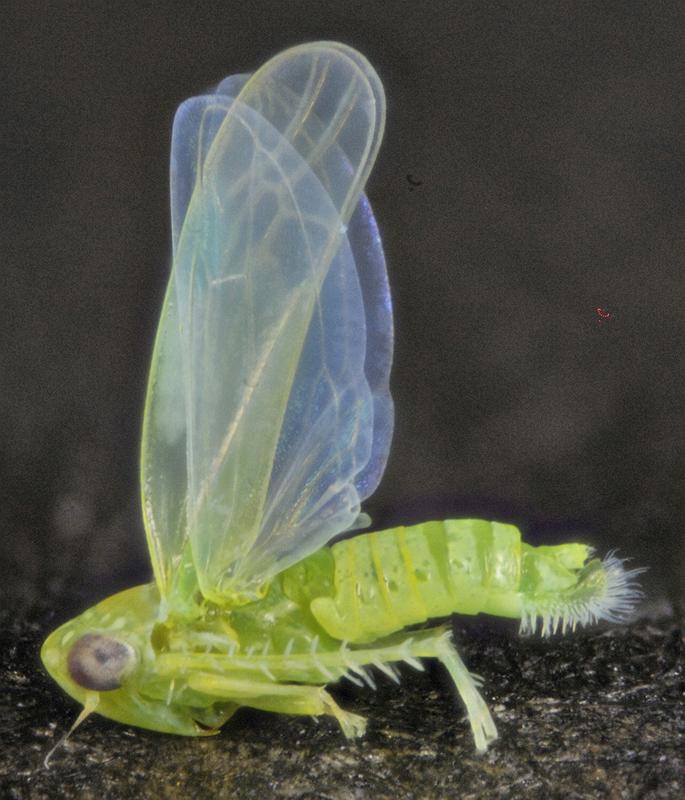

|
|
Forcipata: This little bug flies in and lands fast, then doesn't move - so fast you see no motion at all.
Easy to confuse with a small flower petal unless you're looking at the leaf the moment it lands. Length 5 mm.
| |
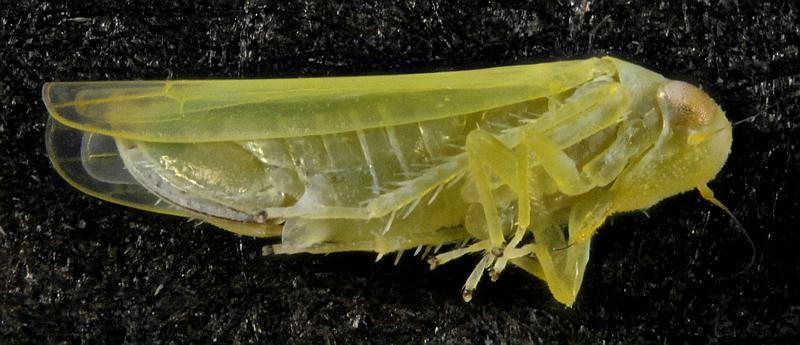

|
|
Gyponana geminata: This leafhopper eats pine tree needles. Length 8 mm
| |
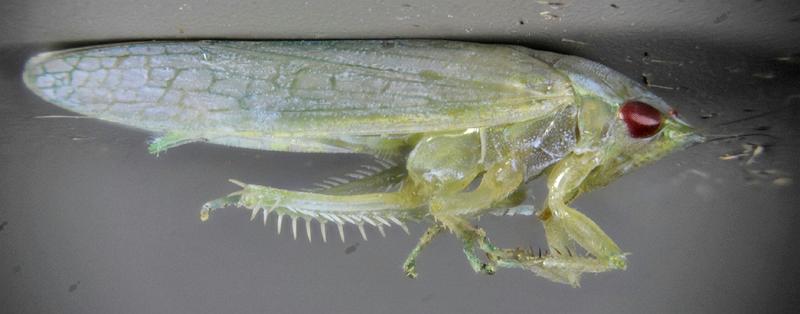

|
|
Graphocephala picta: As do most leafhoppers, this one feeds on plant sap. Length 8 mm.
| |
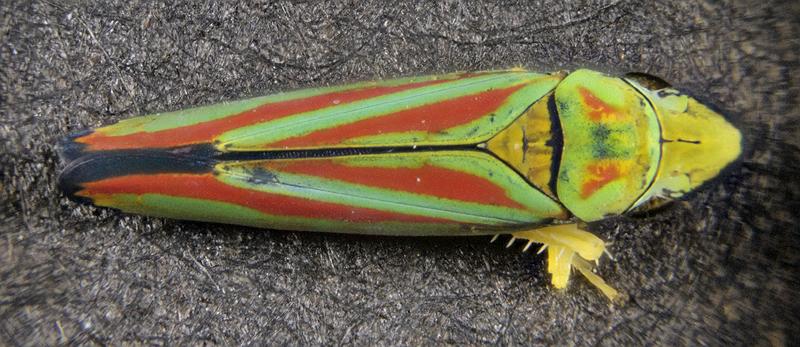

|
|
Metcalfa pruinosa: As do most sap feeders, these bugs excrete honeydew and deposit it on
the plant. This attracts not only ants but also bees. This is the nymph stage; adults are
blue-grey. It overwinters as an egg. Length 2 mm.
| |
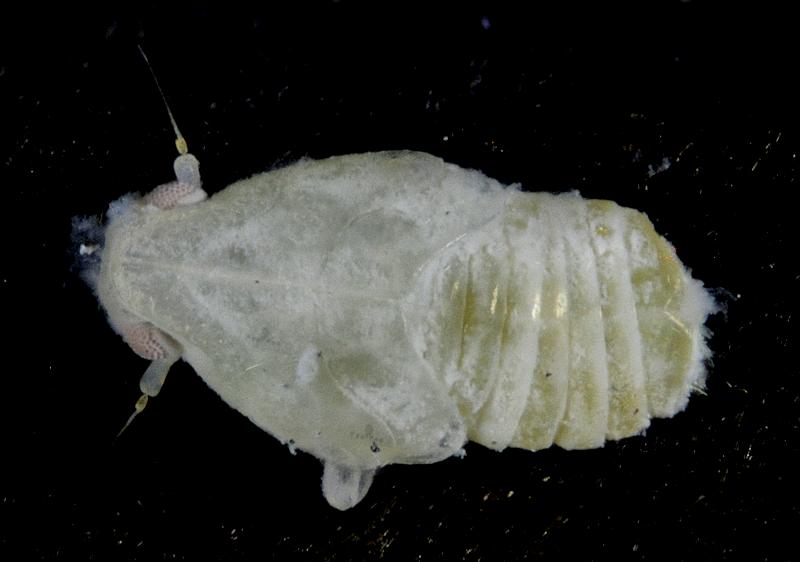

|
|
Orientus ishidae: Japanese Mosaic Leafhoppers arrived in 1919 and feed on many grasses. Length 3 mm.
| |
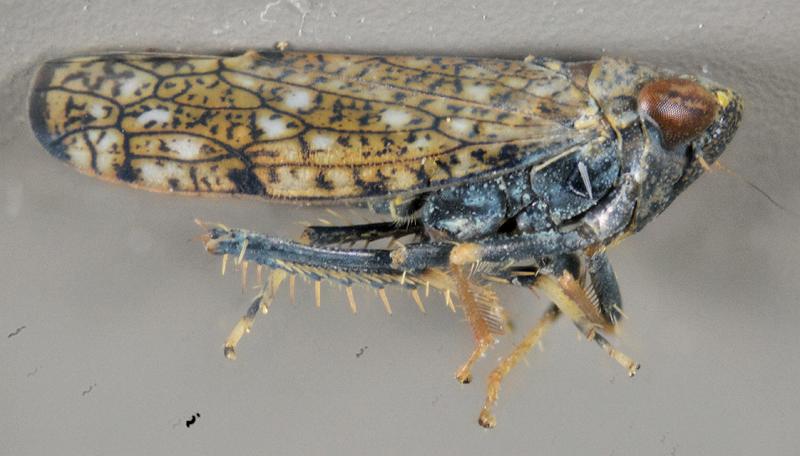

|
|
Philaenus spumarius: The Meadow Spittlebug feeds on most herbaceous plants. It overwinters
as an egg. Length 5 mm.
| |
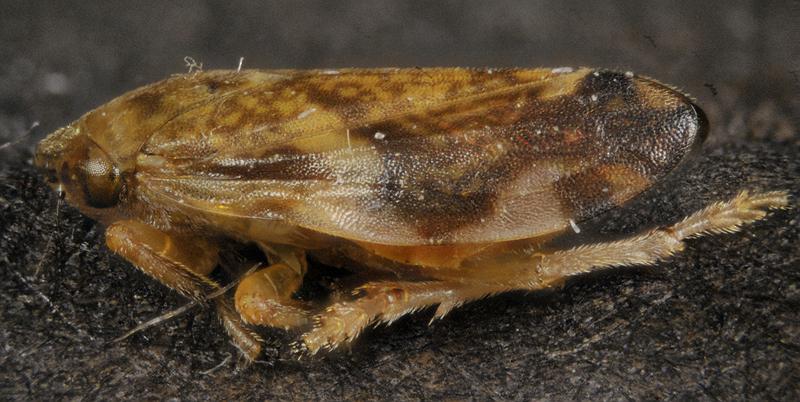

|
|
Tibicen canicularis: An annual cicada, the commonest one here. Length 45 mm.
| |
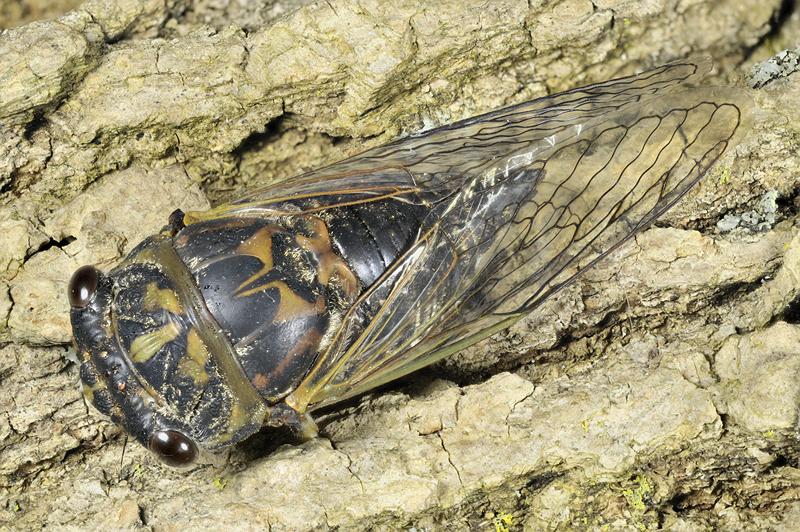

|
|
Typhlocyba: A widely distributed genus of leafhoppers. Length 2.5 mm.
| |
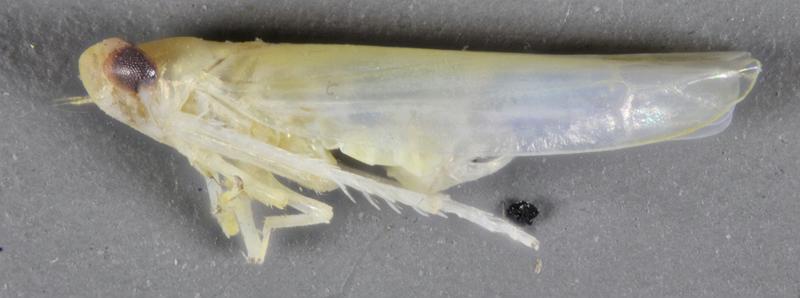

|
| Coccidae
|
|
Coccus hesperidum: Soft brown scale is the commonest scale insect here, especially on indoor plants.
Length 3-4 mm.
| |
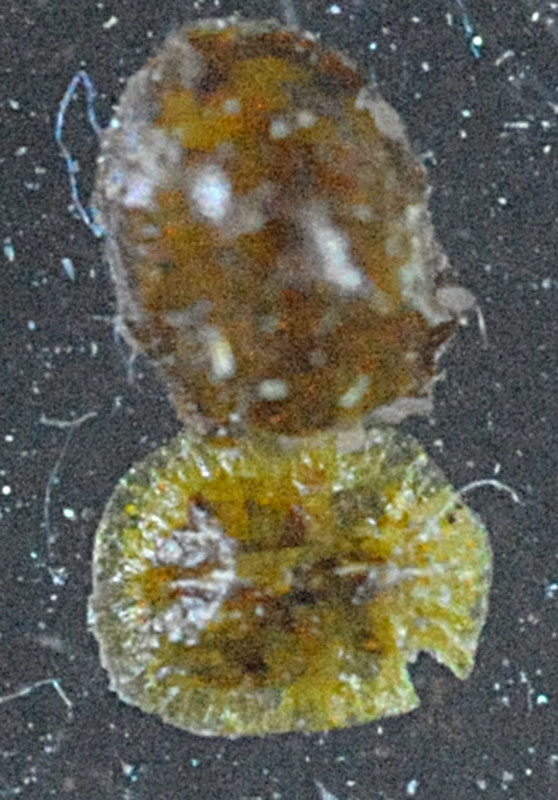

|
| Heteroptera
|
|
Anasa armigera: Horned Squash Bugs, as the name implies, feed on Cucurbitae when they are
available. Length 14 mm.
| |
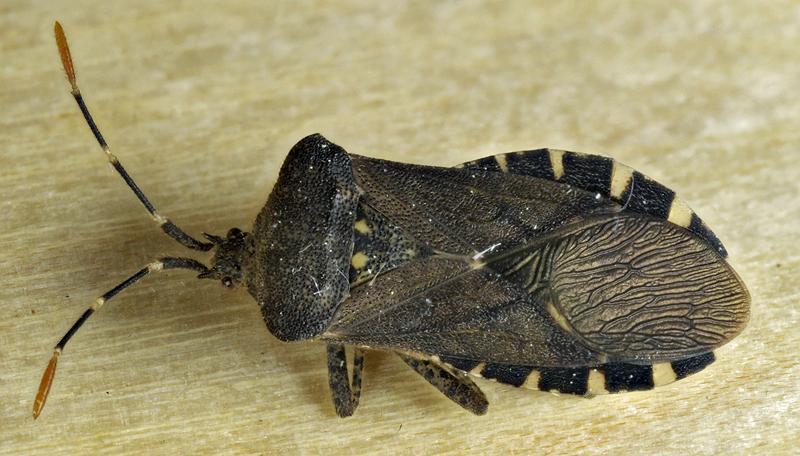

|
|
Asopinae: Both adult and nymph of these stink bugs prey on caterpillars and beetle larvae.
| |
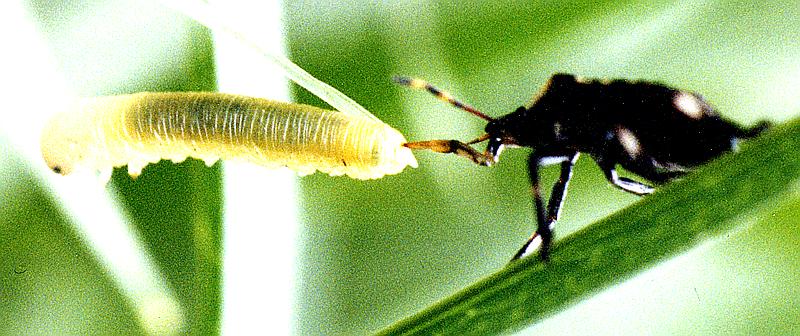

|
|
Banasa dimiata: This stink bug prefers trees and shrubs for food, in my case Ribes rubrum. Length 10 mm.
| |
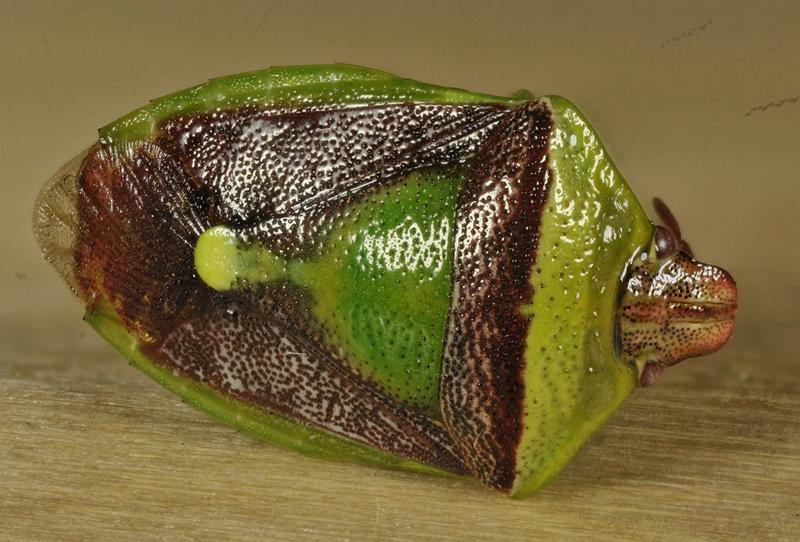

|
|
Brochymena: Many of these stink bugs are predators of caterpillars and beetle larvae. This larva has a
tachnid egg ready to convert it into a parasitic fly. Length 11 mm.
| |
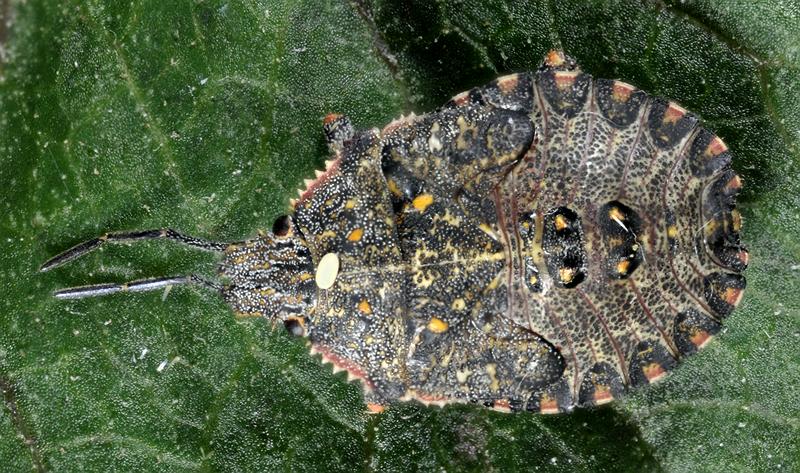

|
|
Chinavia hilaris: The Green Stink Bug eats developing seeds when available. Length 14 mm.
| |
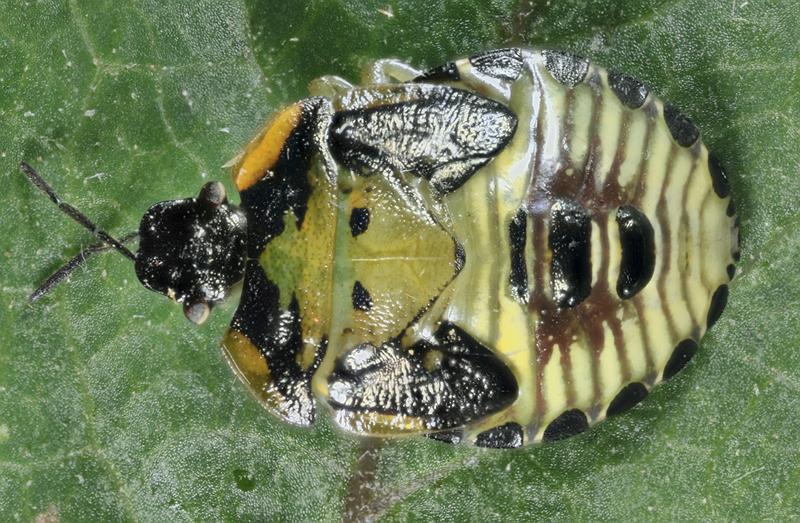

|
|
Cosmopepla lintneriana: The Twice-stabbed Stink Bug female lays eggs in clusters on the host plant and
guards them. As do most stinkbugs, it overwinters as an adult beneath leaf litter. Length 5 mm.
| |
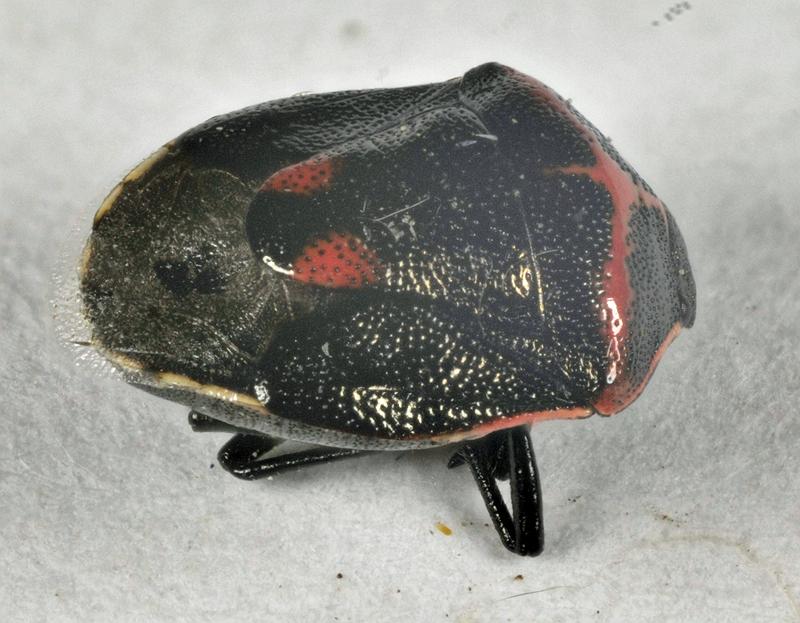

|
|
Euschistus servus: The Brown Stink Bug is a generalist vegetarian: leaves, seeds and fruit. Length 13 mm.
| |
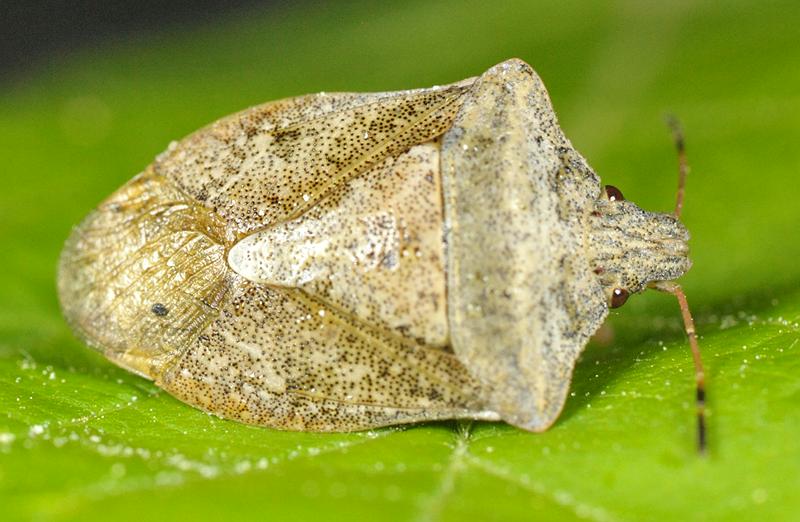

|
|
Euschistus tristigmus: The Dusky Stink Bug is also a generalist vegetarian: leaves, seeds and fruit. Length
12 mm.
| |
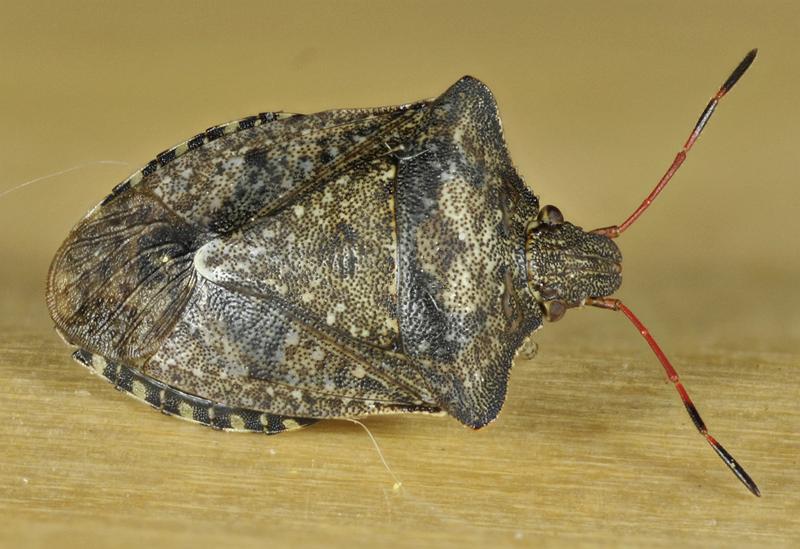

|
|
Gerris: These water striders are present in my small pond most of the summer. This one is
checking out an ant grub thrown in the water.
| |
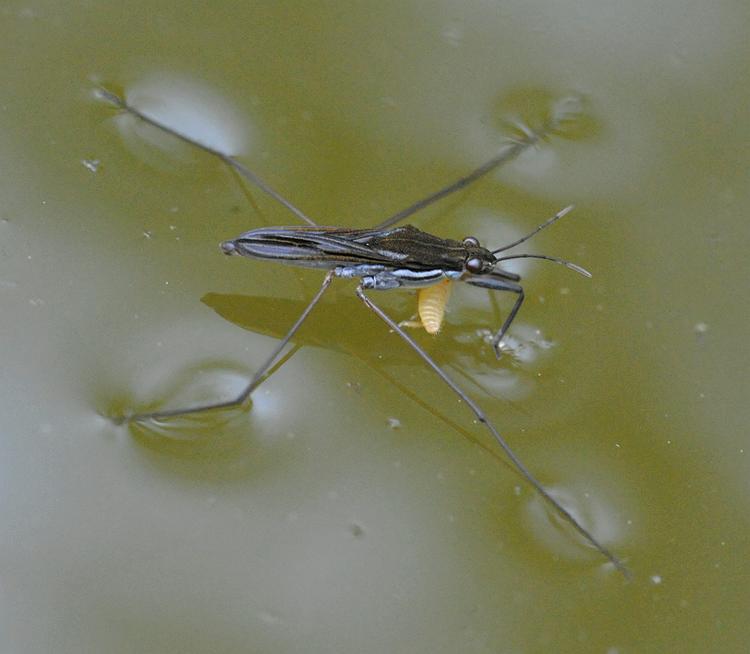

|
|
Heraeus plebejus: This Seed Bug is found under stones and on sumac leaves. Length 4 mm.
| |
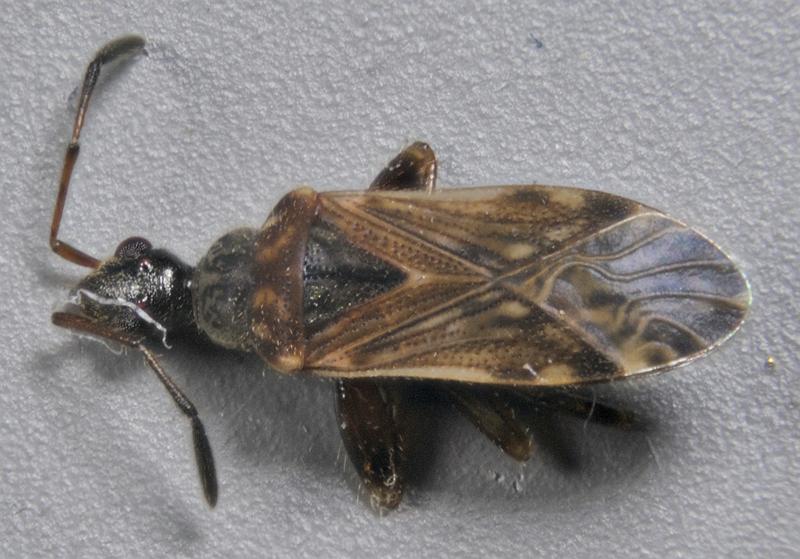

|
|
Leptoglossus occidentalis: A western native that has been moving east, it feeds on sap of conifer seed
cones and seeds. The tibial swellings are distinctive. Length 15 mm.
| |
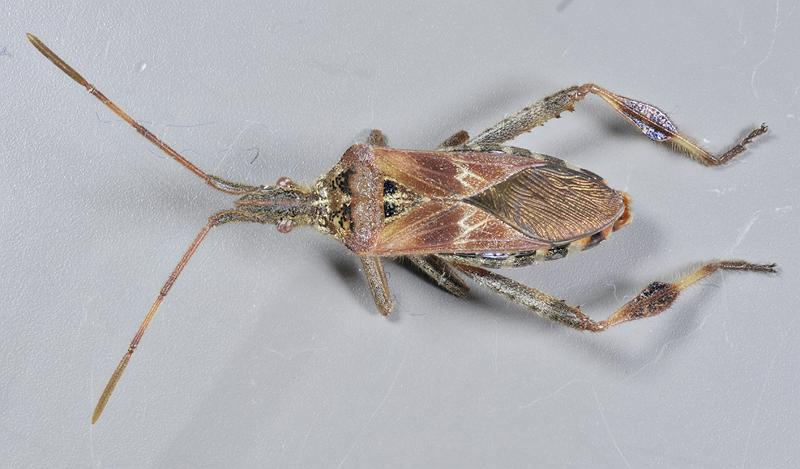

|
|
Leptopterna dolabrata: The Meadow Plant Bug feeds on developing grass seeds. As with all
members of the Miridae, it has no symbiotic bacteria so its survival is strongly dependent on the
nutrient balance of its plant food. Because of this, it is often used in grass nutrient studies.
Nymph length 3 mm (excluding antennae), adult 8 mm.
| |
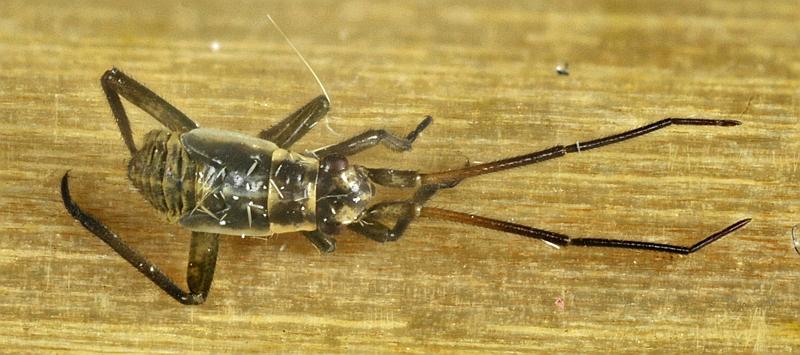

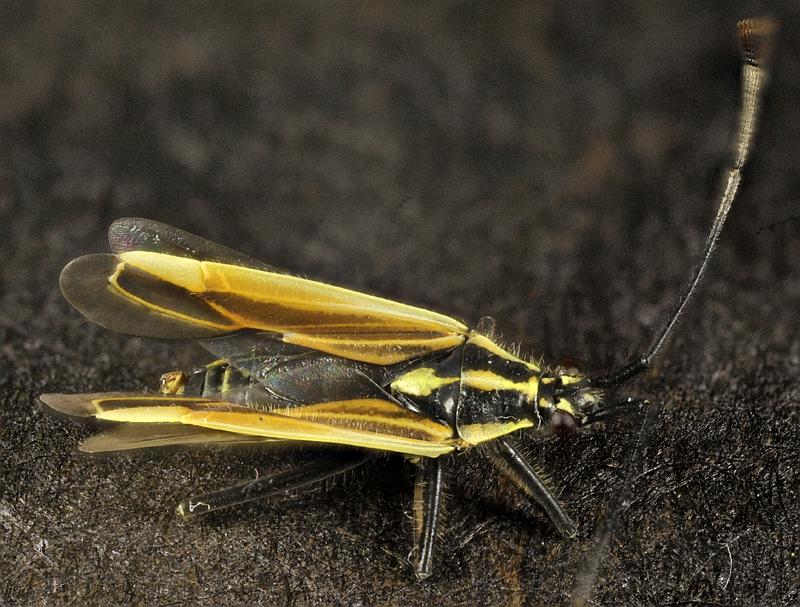

|
|
Lopidea: A group of plant bugs found on many trees and forbes. Length 6 mm.
| |
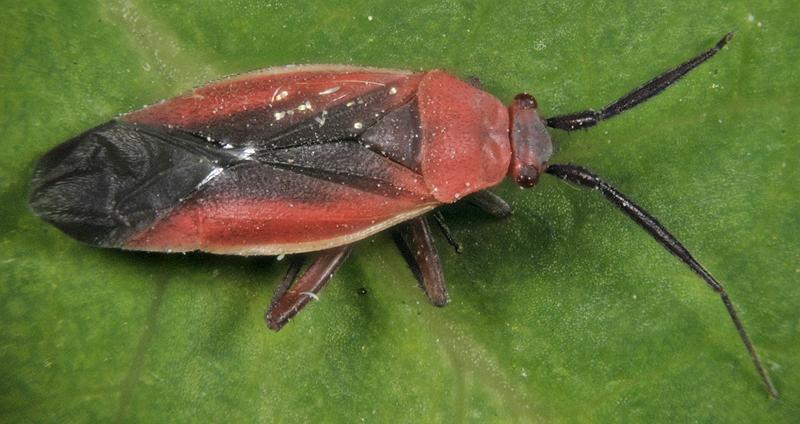

|
|
Lygaeus kalmii: The Small Milkweed Bug sucks nectar from various flowers until milkweed
seeds are available; larvae grow on milkweed; this is a nymph, adults have more black. Length 6 mm.
| |
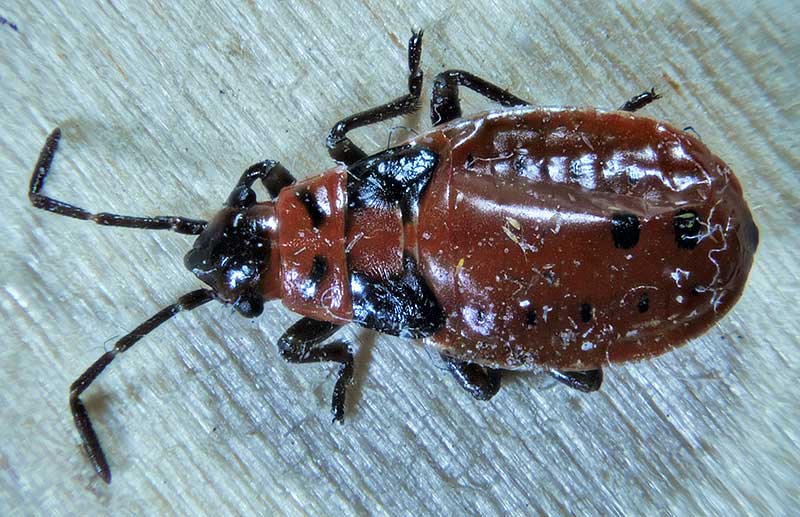

|
|
Lygus lineolaris: The Tarnished Plant Bug is a generalist vegetarian. Length 5 mm.
| |
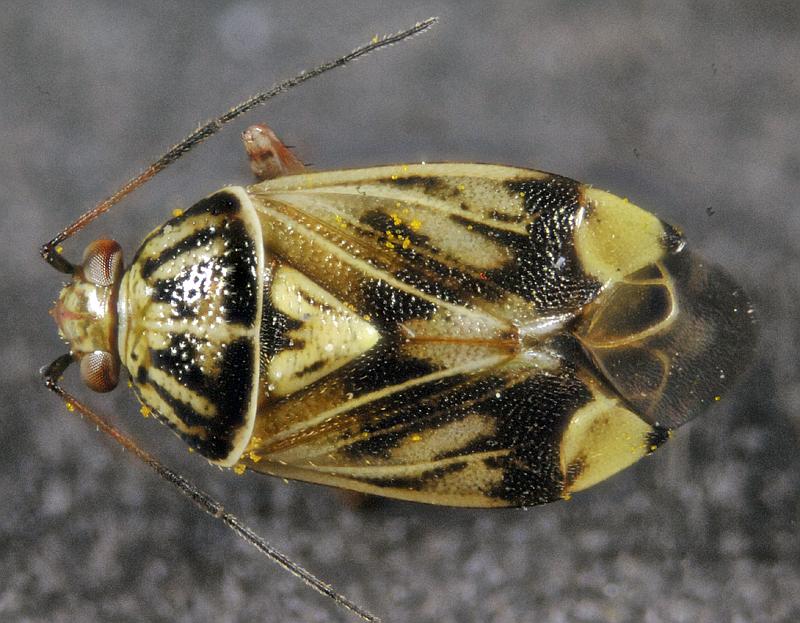

|
|
Myodocha serripes: Long-necked Seed Bugs feed on the seeds of strawberries. Length 8 mm.
| |
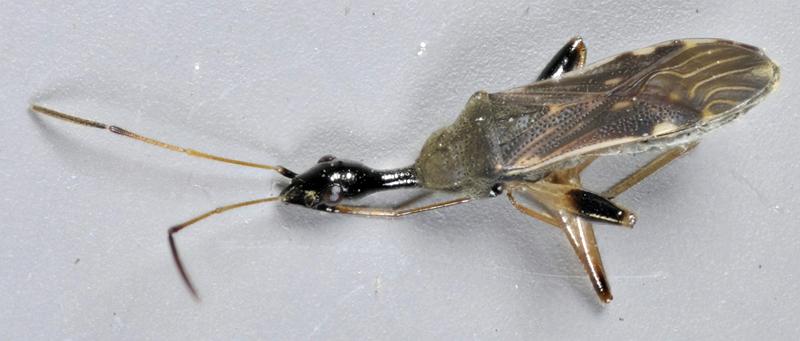

|
|
Neolygus: These Plant Bugs feed on deciduous trees. Length 4 mm.
| |
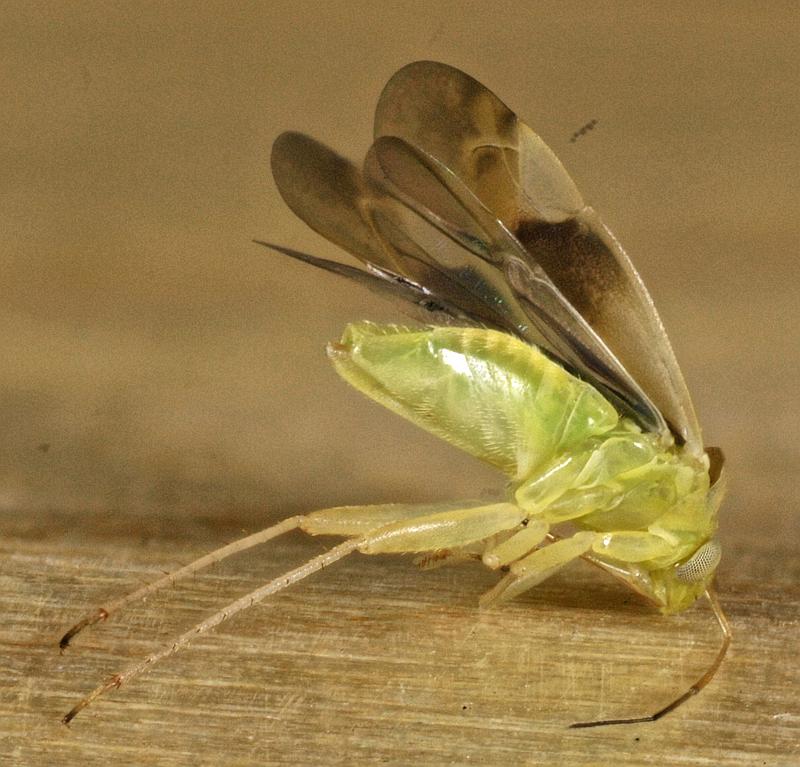

|
|
Neurocolpus: Plant bugs inject a tissue dissolving saliva into leaves then suck out the
liquified plant tissues. They rarely kill plants, just disfiguring the leaves. Immature. Length
3 mm.
| |
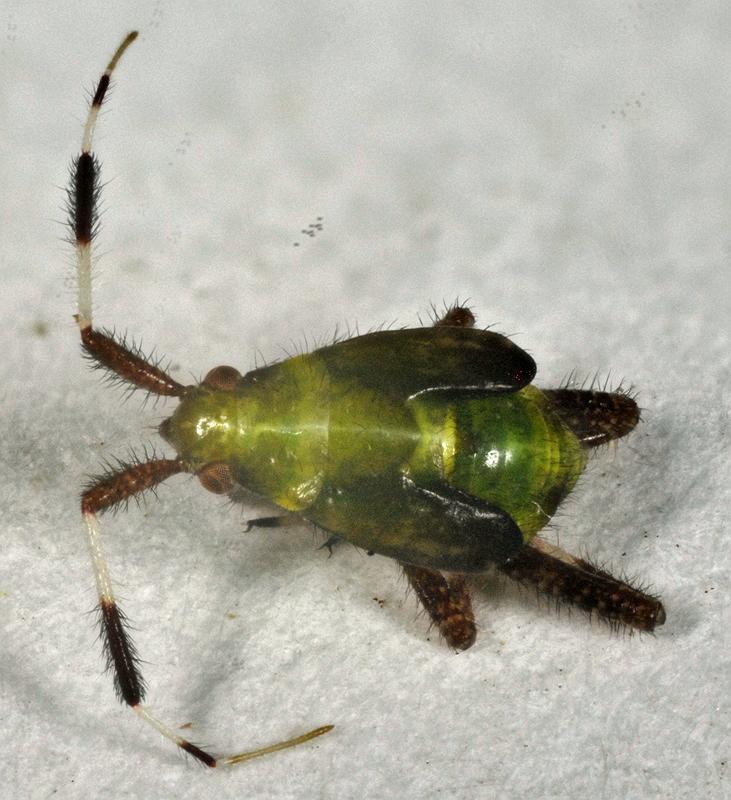

|
|
Phymata americana: If you're less than 50 times the size of this Ambush Bug, you don't
want to be near it! It eats anything it can grab, even wasps and bees.
| |
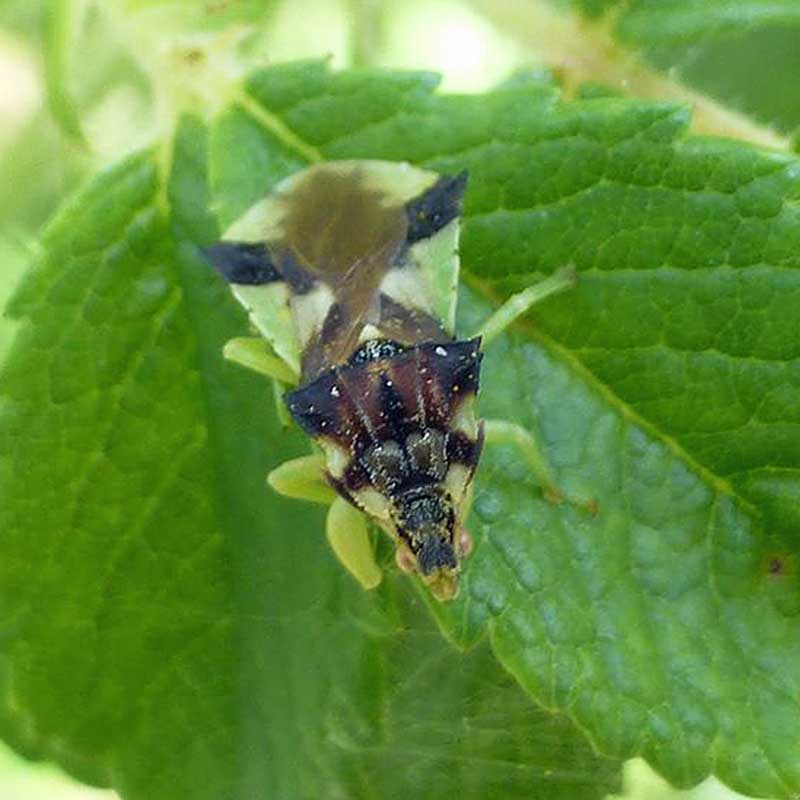

|
|
Phytocoris: These Plant Bugs specialize in eating soft scales and mites. Length 7 mm.
| |
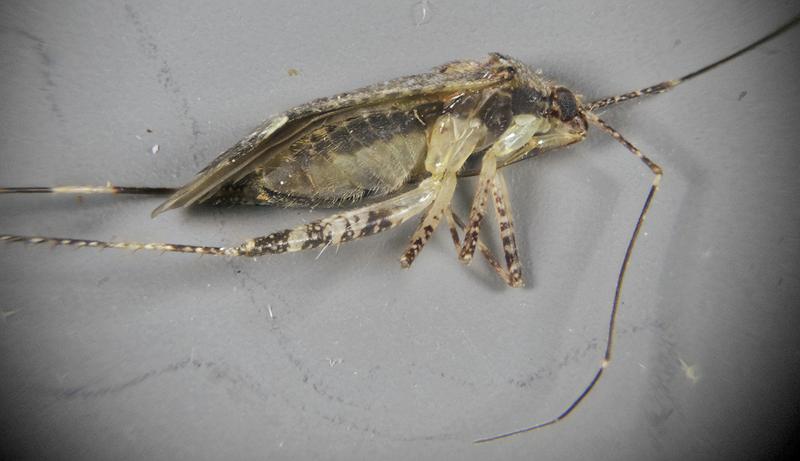

|
|
Pilophorus: Some of these bugs are ant mimics, cohabiting with them. Length 3.5 mm.
| |
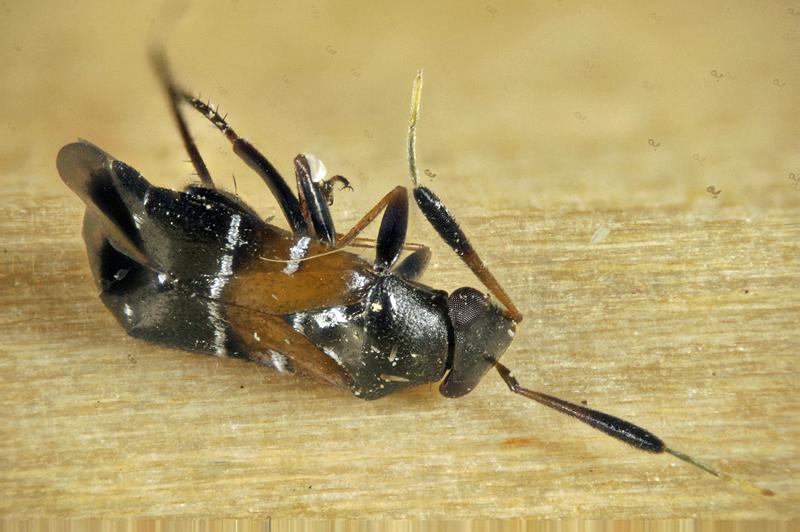

|
|
Reduvius personatus: The Masked Hunter eats small arthropods; the name comes from its
larvae that camouflage themselves with dust. Length 18 mm.
| |
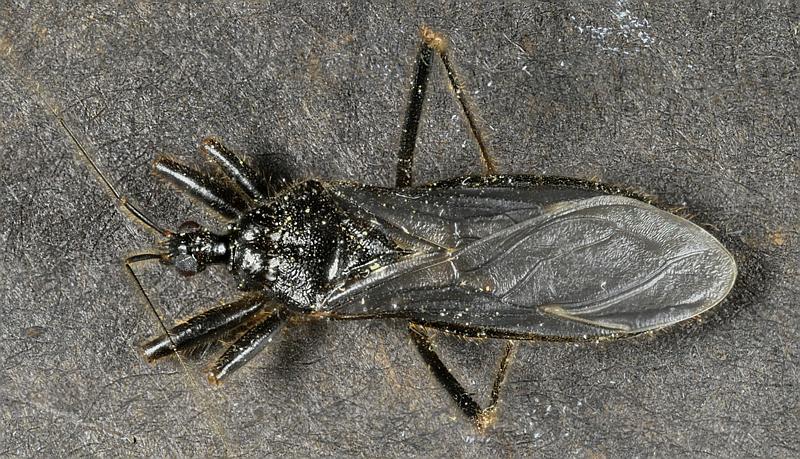

|
|
Stenodemini: One of the Miridae, it eats grasses, choosing them depending on their nutrient
balance. Length 8 mm.
| |
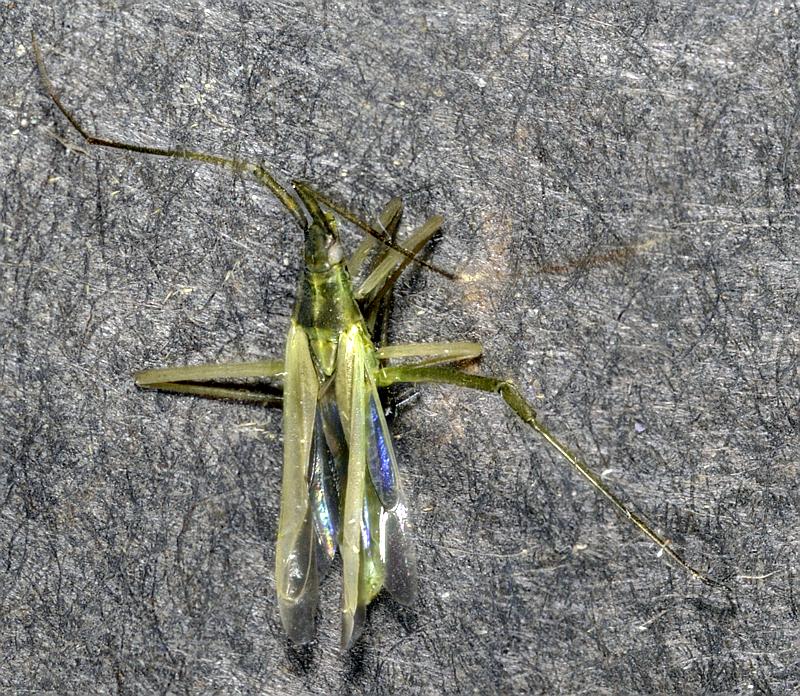

|
| Sternorrhyncha
|
|
Aleyrodidae: Whiteflies feed on the underside of leaves; there are perhaps 150 species in
North America that can only be told apart in the last instar stage. I get hundreds of them in
the shaded part of the east garden every July; wingspan 2 mm
| |
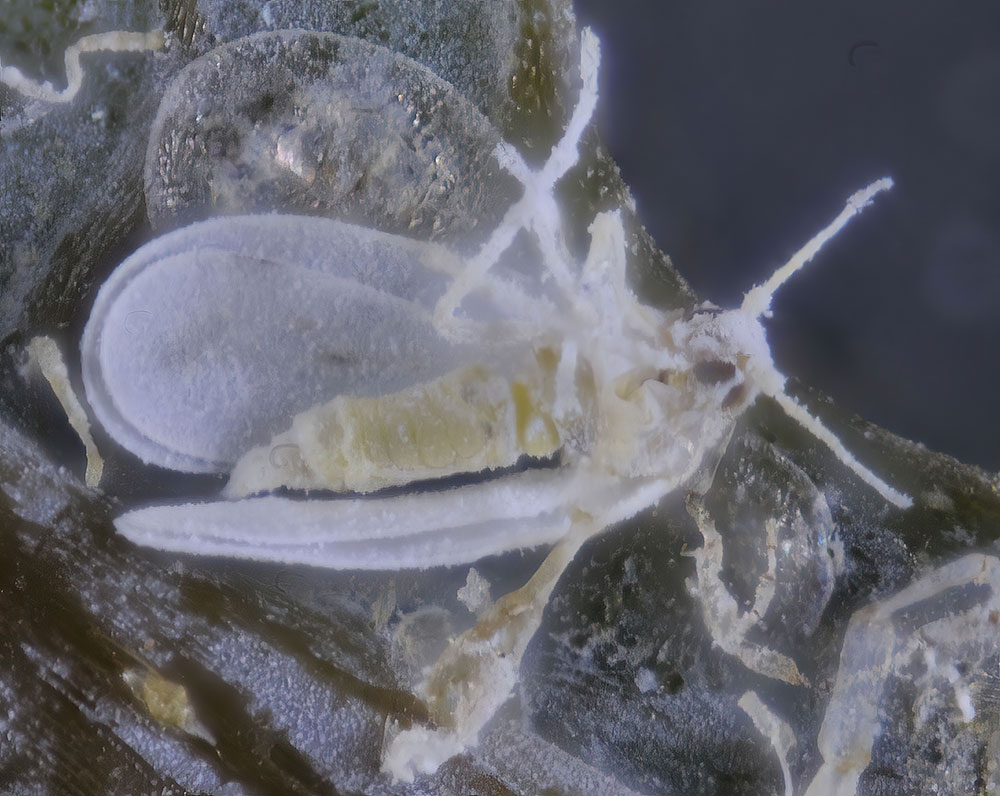

|
|
Aphididae: an aphid that became common on our indoor Kalanchoe. Length 8 mm
| |
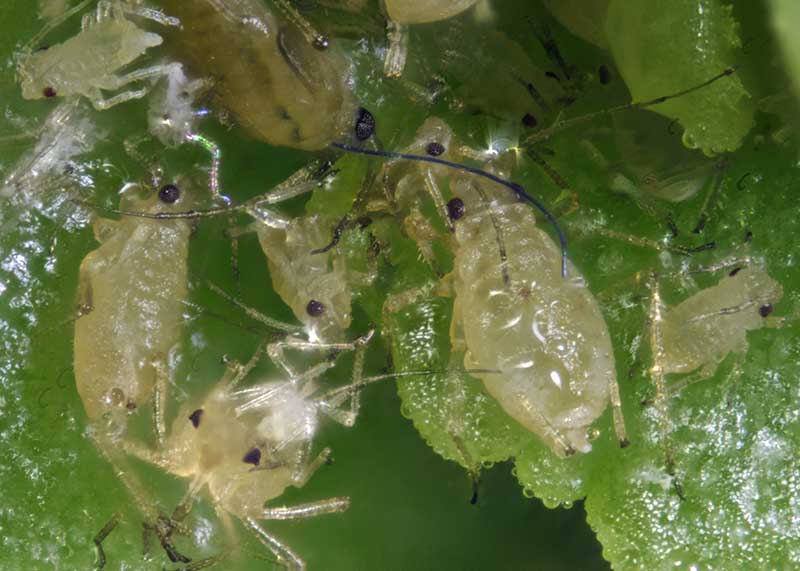

|
|
Aphis maculatae: Spotted Poplar Aphids, as the name implies, are normally found on Populus
but overwinter on Cornus. Regrettably I didn't record the host plant of these, but it was neither.
| |
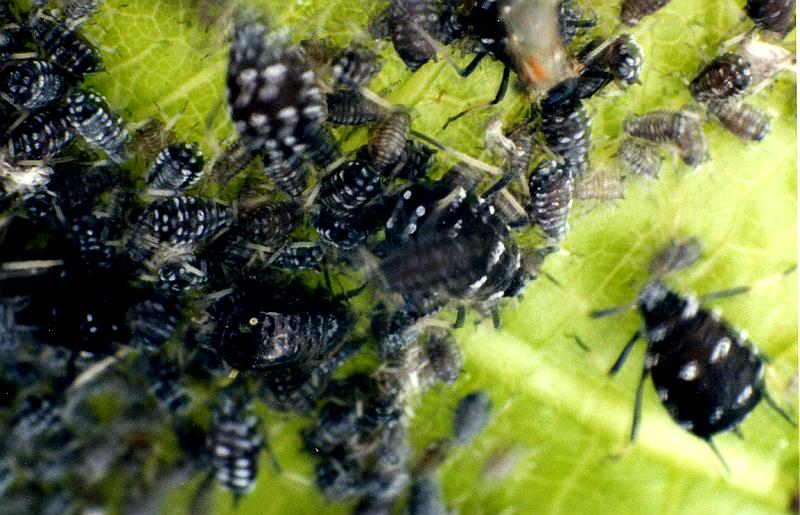

|
|
Aphis nerii: These aphids love Asclepias as so many insects do
| |
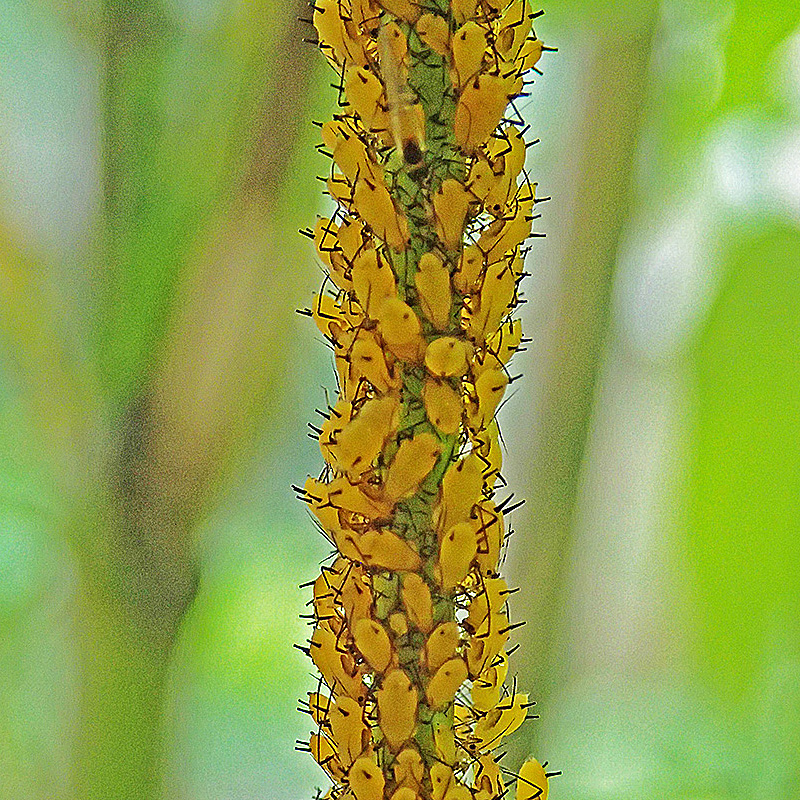

|
|
Aulacorthum solani: An aphid that infests a number of indoor plants every winter. It can
live on just about any plant and is common in homes world wide. Length 1.5 mm.
| |
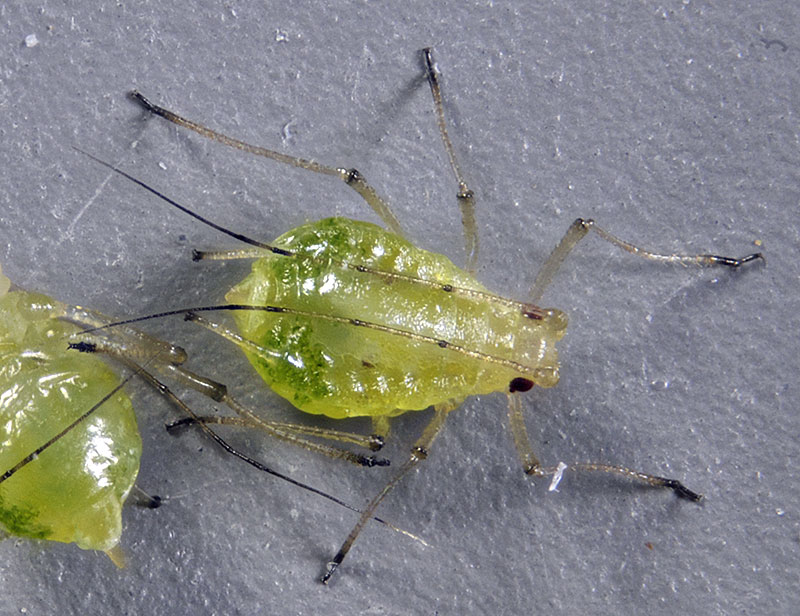

|
|
Macrosiphini: 4th instar winged aphid on Clematis tangutica; it also appeared on Ribes
rubrum. Length 2.1 mm.
| |
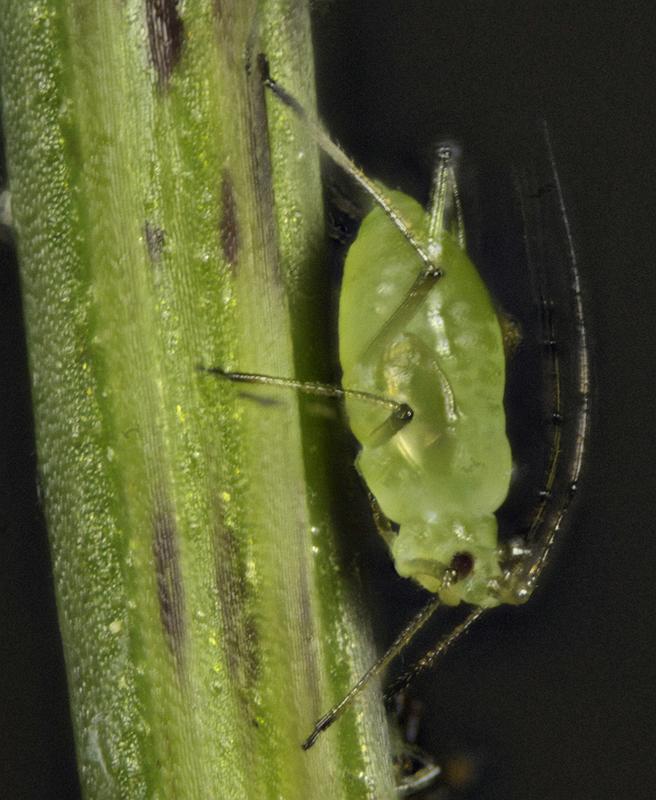

|
|
Myzus: a long-winged aphid that became common on our indoor plants. Wing length 3 mm
| |
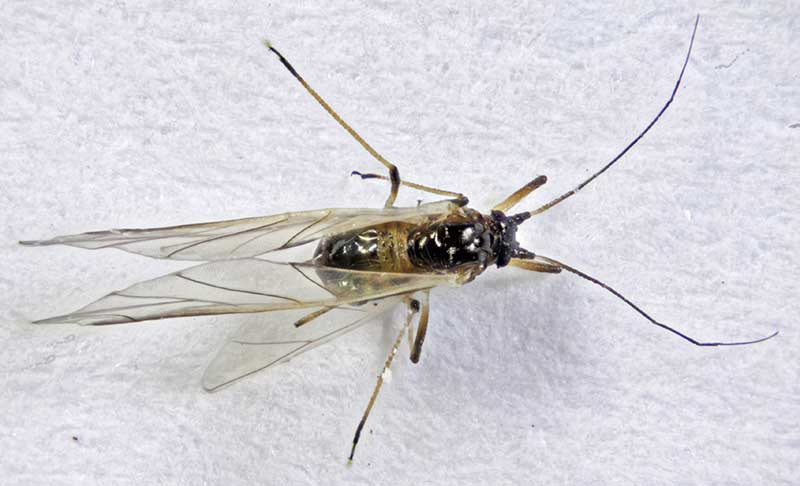

|
|
Neolecanium cornuparvum: Magnolia Scale begins to coat magnolia trees locally in early
summer. It is our largest scale and very visible against the grey bark. It lives underground off
the roots in juvenal stages; it's transported up the tree by ants and tended for its sugar
excretions. Female diameter up to 10 mm.
| |
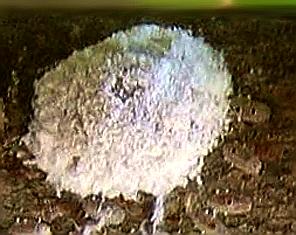

|
|
Staticobium: Host plant Sonchus arvensis. Length 1.6 mm.
| |
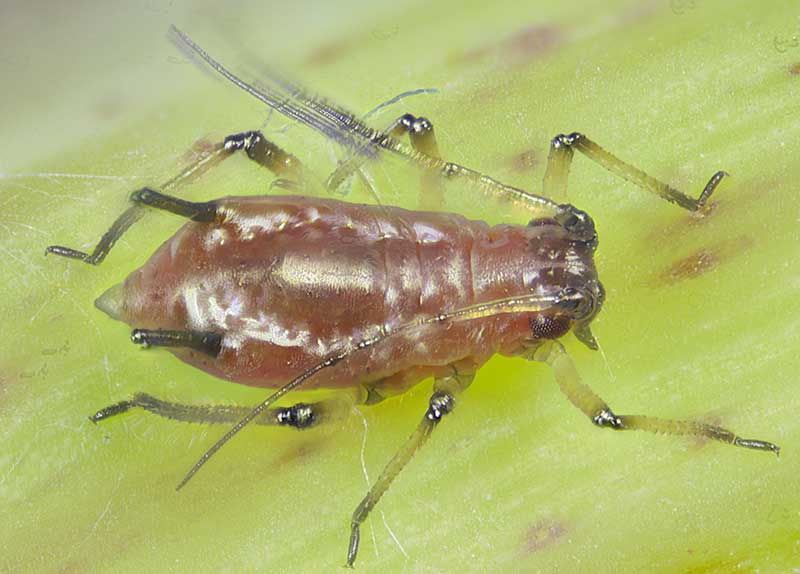

|
|
Uroleucon obscuricaudatus: These aphids appear late July by the thousands on Helenium
helianthoides. Red aphids have acquired the ability to synthesize red carotenoids by incorporating
a gene from fungi; they are the only known member of the animal kingdom with this ability. Neat
bugs. An occasional blast from a hose nozzle to wash them off keeps them acceptably under control.
Goldfinches like them too. Winged adult body length 3 mm.
| |
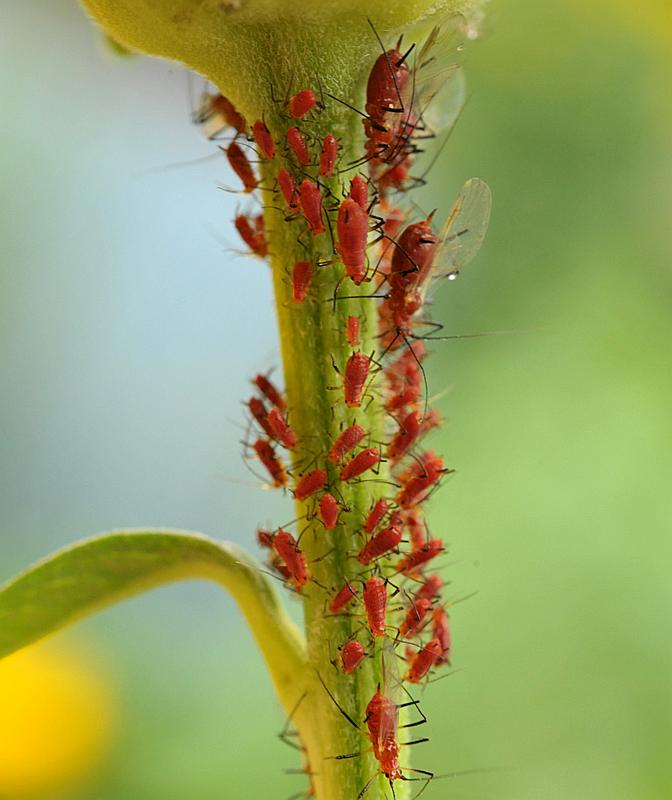

|































































































